B ee S tations

Refueling Bees and Creating Opportunites for Education
Jinghan Zhou
Bee Stations

Thesis Book was written and designed by Jinghan Zhou.
All of the photographs and works by other artist are reproduced and credited for academic purposes. Every resonable attempt has been made to identify owners of copyright. Error or omissions will be corrected in subsequent editions.
The original content and design of this book is © Jinghan Zhou, 2022.
Printed and bound by Printer Company Name. Typeface: Helvetica Neue by Max Miedinger, Mergenthaler Linotype Company, 1983.
Bees and Creating Opportunites for Education
MLA
Refueling
Jinghan Zhou
Landscape Architecture Thesis 2022, RISD
A thesis submitted in partial fulfillment of the requirements for the Master of Landscape Architecture Degree in the Department of Landscape Architecture of the Rhode Island School of Design, Providence, Rhode Island.
By Jinghan Zhou Date 5/28/2022

Approved by Masters Examination Committee:
Johanna Barthmaier-Payne , Department Head, Landscape Architecture

Emily Vogler, RISD Associate Professor, Primary Thesis Advisor
Gavin Zeitz, RISD Critic, Thesis Committee

CONTENTS
CHAPTER 03 | CONDITION ANALYSIS
ABSTRACT KEY TERM LEXICON INTRODUCTION REFLECTION BIBLIOGRAPHY
09 10 18 113 116
CHAPTER 01 | CRITICAL ARGUMENT
THE HISTORY OF BEEKEEPING BEE REVOLUTION DISCOVER BEE KEEPING BUCK NAKED FARM, NC APIDE HABITAT
CHAPTER 02 | ISSUES
BEEKEEPING ROUTES NATIONAL CROP GARTOGRAPHIC ISSUE AND SULOTION THE CHAIN ISSUES BEHIND
CUMMERICAL BEEKEEPING TYPOLOGY OF POLLINATED CASE STUDIES
CHAPTER 04 | DESIGN PROPOSAL
DESIGN STRATEGY CORRIDORE HABITAT PROPOSAL BEE STATIONS PROPOSAL
72 84 100
54 56 66 22 24 26 30 38 40 44 48 37
Abstract

This painting: found on the wall of a cave in Spain that shows a person climbing a tree, holding a basket and stealing honey from some very unhappy looking bees
Commercial honey bees are transported between pollinated crops and play an essential role in our agricultural system. This thesis proposes a network of bee stations and corridors that could improve the health of transported bee populations, increase local beekeeping, and help educate the public about the importance of bees and pollinators. The bee stations have at least 100 acres of diversified high-quality wildflower species where trucks that transport bees can stop to “refuel” their hives. The bee stations also have an education center where the public can walk through the wildflower fields, observe bees, make beehives, and learn how to keep bees. In addition to the bee stations, habitat corridors would be strategically “spliced” into existing agricultural fields to create a more diversified forage for bees within the farmland mosaic. Combined, both strategies would become a powerful tool to provide a healthy, diversified, and resilient system to support bee health and reduce colony collapse.
Bee Stations: Refueling Bees and Creating Opportunites for Education 8 9
1:Bond, Jennifer K., et al. “Honey Bees on the Move: From Pollination to Honey Production and Back.
2:Wilson-Rich, Noah. The Bee : A Natural History. Ivy Press, 2018.
Hymenoptera
The order of insects that includes bees, wasps, and other ovipositors
Bees are either social or solitary. It includes social bees, such as the honeybee, typically attacking only to defend their territory or when the colony is threatened. Solitary wasps normally use their sting to kill prey for food or to temporarily paralyze prey to permit egg laying in or on the host. The Africanized “killer” bee is particularly aggressive when it comes to territory defense and chases threats farther than other species, reportedly even up to 2 miles.2 All bees that collect nectar and pollen, produce wax and honey. The Bee was domesticated for its honey around the end of the Neolithic period and is usually kept in hives.2
Beekeeping
The care and management of colonies of honeybees
Bees are kept for their honey and other products or their services as pollinators of fruit and vegetable blossoms or as a hobby. The practice is widespread: honey bees are kept in large cities and villages, on farms and rangelands, in forests and deserts, from the Arctic and Antarctic to the Equator.2
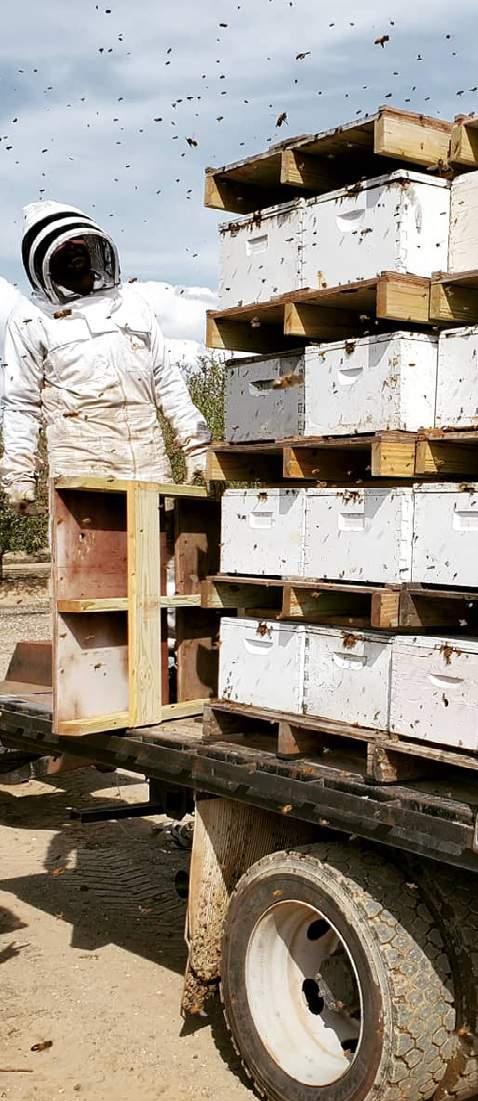
Bee Sight
Bees have two distinct sets of eyes, each with their own function
The eyes of the honey bee have been well studied. They see primarily blues and greens, with some other colors formed through combinations of visual cues.1
Pollenation
The transfer of pollen from male to female flower parts, enabling fertilization
Some plants are self-pollinating, while others require cross-pollination, from one plan to another, through a vector such as wind, water, or an insect.2
Spirituality
Bees and their products have a long association with human religions and rituals
Beekeeping and honey has been used throughout human history to convey blessings and be used as an offering to the gods and spirits and to protect this life and the next.2
1:Wilson-Rich, Noah. The Bee : A Natural History. Ivy Press, 2018.
2:Breed, Michael D., and Janice Moore. Encyclopedia of Animal Behavior. Elsevier, 2010
Lexicon
Stations: Refueling Bees and Creating Opportunites for Education
10 11
Bee
Figure 1
Monoculture
A form of agriculture that depends on growing only one crop type in a specific field
This type of cropland is the most common agricultural practice in the U.S., which includes 440 million acres of crops cultivated for monoculture. In contrast to the polyculture system, monocultures are easier to manage as farming becomes increasingly mechanized.1
1:Earth Observing System. “Monoculture Farming Explained: What Are the Pros and Cons?” Eos.com, 20 Oct. 2020

Nesting
Usually describes wildbee’s shelter places
The sizes and location of bee’s nests vary among species and depend greatly on the degree of sociality—some burrow into the ground to build a nest, while others prefer cavities. Solitary bees have small, simple nests, while semi-social and eusocial bees build more extensive, more elaborate nests.1

1“Honey’s Eternal Shelf Life, Explained.” Discover Magazine, www. discovermagazine.com/planet-earth/honeys-eternal-shelf-life-explained.
 Honeybee Nest
Bumblebee Nest
Honeybee Nest
Bumblebee Nest
Bee Stations: Refueling Bees and Creating Opportunites for Education
2 12 13
Figure
Honey Hunting
The process of gathering honey from wild bee colonies
Honey hunting or honey harvesting is the gathering of honey from wild bee colonies and is one of the most ancient human activities and is still practiced by aboriginal societies in parts of Africa, Asia, Australia and South America.1
1:Wilson-Rich, Noah. The Bee : A Natural History. Ivy Press, 2018.

Figure 4
Figure 3

“This curious passion for a small insect can transcend barrieres of politics, race and language, and bring strangers together as friends”
— Eva Crane
Education Figure 4 16 17
Bee Stations: Refueling Bees and Creating Opportunites for
Bee pollinators are the keystones for the planet’s survival. They are essential to ecosystems and the diversity of insects, as well as the building blocks of all the species of wildlife. More than 70% of the crop depends on bee pollination, and during the blooming season, bees are transported around the country to meet the pollination needs of farmers.1 However, bee populations are declining in many regions of the world, threatening food security and ecosystem functions. The primary cause of colony collapse is anthropogenic pressure, including overcultivated land, modern agricultural practices, mono-crop agriculture, and the overuse of pesticides. All these activities are causing bees, especially honeybees, to suffer from pesticide pollution, poor nutrition, and parasite attacks. Without a more diversified landscape strategy, we will continue to decline bee populations, with significant impacts on agricultural production and terrestrial ecosystems.
cultivated land, modern agriculture systems, monocrop deserts, and the overuse of pesticides. All these activities are causing bees, especially honeybees to suffer from pesticides polluting, poor nutrition supply, and parasite attacks. Yearly, 35% - 55% of the bee colonies have become extinct. 1
In addition to pollinating crops, bees support the ecosystems that clean the air, stabilize soils, and support other wildlife and the health of human beings. Without a better and sufficient new biodiversity connecting habitats, bees cannot function adequately to support terrestrial productivity. That is why a new system with appropriate high quality forages plants and habitat corridors are an important tool to promote and provide a healthy, diversified, and resilient ecosystem Leading Questions
Bees serve as a direct food source for some animals, such as birds, they pollinate fruiting plants which serves as a food source for a broader range of animals and they provide environmental services that maintain ecosystem health. Commercial honey bees also play an unavoidable essential role in our food chain and in feeding the whole ecosystem. Bee populations are declining in many regions of the world, threatening human food supplies and ecosystem functions. The major issue is anthropogenic pressure, including over
How can we create agricultural policies that support farmers creating diversified bee habitat?
How can design help to addressed the issues caused by the industrialization of beekeeping?
How can monoculture agriculture be tweaked to increase the biodiversity of the bee habitat?
How can we support the health of transported bees while helping to strengthen local
Problem + Sollution | This diagram describes the existing relationships between major beekeeping issues and possible solutions to solve the problems.
1:Wilson-Rich, Noah. The Bee : A Natural History. Ivy Press, 2018.

Introduction
for Education 18 19
Bee Stations: Refueling Bees and Creating Opportunites
CHAPTER 01 | CRITICAL ARGUMENT
THE HISTORY OF BEEKEEPING BEE REVOLUTION DISCOVER BEE KEEPING BUCK NAKED FARM, NC APIDE HABITAT POLLINATION PROBLEMS

Bees and Creating Opportunites for Education Figure 5 20 21
Bee Stations: Refueling
The History of Beekeeping

Humans have been after honey for millennia. The original record of honey collection is from 15,000 years ago.1
The oldest form of beekeeping took place at least 5,000 years ago in Ancient Egypt.1 Egyptian beekeepers would actually transport hives with the changing of the seasons, keeping up with the spring blossoms on donkeys and possibly even boats going up and down the Nile. While the Egyptians knew how to keep bees, they really prized wild honey and just like those Spaniards 10,000 years before, they would risk their own safety to steal from wild colonies. They also use honey as medicine and beeswax for mummy antisepsis.
With time, beekeeping spread throughout Europe. It was popular in Ancient Greece and Rome, and the Roman poet Virgil wrote some tips on beekeeping. Following colonization, beekeeping expanded from Britain to America. At that time, the beekeeping was individualized to support the necessary nutritional supplement for the first colonizers. The honey bee provides sugar, candle wax, and nutrients for the colonizers. With the development of agriculture and industrialization, beekeeping proliferated.
After WWII, the advent of synthetic chemicals appeared. More and more crops depended on pesticides and herbicides to get a healthy look and better production of crops through chemical pest management.1
Bees
1.Wilson-Rich, Noah. The Bee : A Natural History. Ivy Press, 2018. Creating Opportunites for Education 22 23
Bee Stations:
Refueling
and
Figure 6
The Evolution of Bees

About 120 million years ago, only dinosaurs lived on the earth. In this time era known to geologists as the Cretaceous, the greens include just ferns, cycads, huge horsetails, and conifers. Like bees, only wasps visit fern-like plants. Plants during this time scattered their pollen by the wind. After the small ice age, plants evolved with climate change.2
The flowering plants spread across the world. These flowers also developed a better form for pollinating insects, and bees became the efficient pollinators flying from plant to plant and carrying pollen grains between plants. In time, there was a change in the foraging preferences of wasps.
Larter on this, wasps become bees that only feed on pure pollen.1
1.Wilson-Rich, Noah. The Bee : A Natural History. Ivy Press, 2018.
2.Goulson, Dave. “The Beguiling History of Bees [Excerpt].” Scientific American, 25 Apr. 2014.
Education
Bee Stations: Refueling Bees and Creating Opportunites for
24 25
Bumble Bee + Honey Bee
Jennifer and discovered the bee frames in early spring; all the bees are gathered in the center on a cold day.















To better understand the living conditions of bees and beekeepers. I visited Buck Nacked Farm, a private farm owned by Jennifer, the gardener, beekeeper, and Paul, the hunter. It is located in Moncure, North Carolina. Jennifer, as a proficient beekeeper, has about 35 hives with her. She also has a forage planting bed to feed bees yearly.
Smoking hives; to keep bees calm during the hive inspections. Bees think this smoke is a forest fire.










An old beehive that could clearly see the lava zone, diseases, and storage zone











Look how cool I hold the frame myself! Bees were activating at both sides of the frame..


A drone bee on my hand, only a healthy and large hive has a drone bee. Drone only mating and eating.



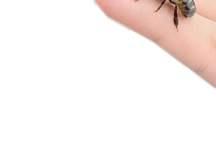
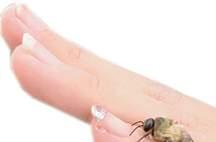


NC 04/09/2022
Buck Naked Farm Visit,
Stations:
Creating Opportunites for Education 26 27
Bee
Refueling Bees and
Zoom in a moment inside a beehive.
By looking closer, you can see the worker bees calling their queen. At the bottom, a queen is layering eggs and circled by workers...

for Education 28 29
Bee Stations: Refueling Bees and Creating
Opportunites
Apidea Habitat Condition & Requirement


To create or enhance a bee habitat we need to understand their habitat requirements. Pollinating insects, including bee species, have three major requirements: a source of food, and nesting shelter places.

Nectar and pollen sources: a suitable habitat requires a diversity of blooms to sustain year-round pollen sourcing. This diverse palette should include a variety of blooms colors and floral shapes in order to benefit more native pollinators.. Bee sight is primarily tuned to see blues and greens, they perceive other colors through combinations of visual cues.1
Nesting shelter: Bees will build nests in order to raise their brood. About 60 percent of bee species nest underground excavating brood cells for their eggs. Some bees choose wood trunks tunnels, creating a linear series of portined cells, while others use resin, mud, and petals to form these partitions.2
1.David Wallace-Wells, “The Blight of the Honeybee.” 2015.
2.Wilson-Rich, Noah. The Bee A Natural History. Ivy Press, 2018.
Bee Stations: Refueling Bees and Creating Opportunites for Education 30 31
Honeybee vs. Wild Bee
0.6
0.2 4000 3000
1.0 fractio of total pollen grians deposited by wind bees US value
0
0.4 PA pumpkinwatermelontartcherryapplesweetcherryblueberryalmond FLCAMIPAMIPAMAWCFLPACAFL
600
2000 1000 00
honey beewild bee 500 400 300 200 100
0.8 Bee Stations: Refueling Bees and Creating Opportunites for Education 32 33
The charts on the following page represent that honeybee leads our commercial and economic industry. On the other hand, the wild bee has less value in the economic sector. But, Wild bee plays an essential role in the ecosystem. It could help the pollination industry to pollen the major beekeeping crop plans. This fact led to the question, how could we use wild bee species to reposition the commercial industry?
Production requirements
Why bee pollination is important?
Bee pollination could benefit fruits’ quality, quantity, and market value. Bee pollinated fruits were heavier, had fewer malformations, and reached higher commercial grades. This type of fruit crop had increased redness and reduced sugar-acid–ratios and was firmer.

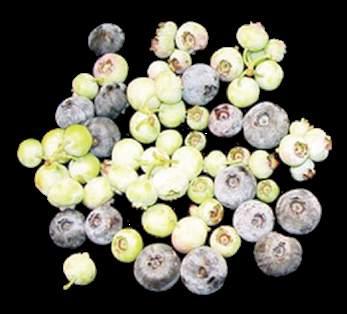
Here are two typical types of pollinated fruit crops. The blueberry one needs to be pollinated by both bumblebees and honeybees. The strawberry crop only requires honey bee pollination due to the honeybee’s moving habit.

Bumble bee pollination | Blueberry’s flower is bell shape, honey bee’s tune is too short to reach the nector, thus honey will get the pollen on the edge of the flower thus from left over of bumble bees
Honey bee major crop | The Strawberry flower shape provides a perfect landing platform for the honey bee, thus helping the honey bee easily reach the nectar of the flowers.

Good Pollinated Bad Pollinated
Good Pollinated Bad Pollinated
Bee Stations: Refueling Bees and Creating Opportunites for Education 34 35
CHAPTER 02 | ISSUES
BEEKEEPING ROUTES

NATIONAL POLLINATED CROP GARTOGRAPHIC ISSUE AND SULOTION
THE CHAIN ISSUES BEHIND
and Creating Opportunites for Education 36 37
Bee Stations: Refueling Bees
It is estimated that 85% of the world’s species of flowering plants depend on pollination1. At the same time, eighty-seven percent of the world’s food crops depend on honeybees for pollination. “Driven by growing consumer demand for fruits, nuts, and vegetables, U.S. farmers are expanding their cultivation of these pollinator-dependent crops. Beekeepers move their bees around the country to service the rising number of pollination contracts and seek out quality forage to produce honey.”1
Limited nationwide data exist on the number of beekeepers carrying honeybee colonies that pass through each State throughout the year, the routes these colonies take, and the distances traveled. Using data from a USDA survey of beekeepers, this report quantifies honeybee colony movements over the four seasons. It provides a basis for understanding how the transport of honeybee colonies affects pollination services, honey production, and the loss of colonies. 2

The intensity of the use of pollination services across a variety of pollinator-dependent crops in various regions and States is also summarized to explain the timing and volume of colony movements. The primary issues that cause the decline of the beekeeping colony are the pesticides that poison the bees, and monoculture agriculture that causes poor nutrition issues for bees.
1.Pfister, S.C., Eckerter, P.W., Krebs, J. et al. Dominance of cropland reduces the pollen deposition from bumble bees, 2018.
2.Bond, Jennifer K., et al. “Honey Bees on the Move: From Pollination to Honey Production and Back.
Bee Stations: Refueling Bees and Creating Opportunites for Education 38 39
Beekeeping Routes Analysis
CCD is also called Colony Collapse Disorder: “A phenomenon that occurs when the majority of worker bees in a colony disappear, dead or leave behind a queen, plenty of food and a few nurse bees to care for the remaining immature bees and the queen.” 1
Based on the analysis of the EPA(United States Environmental Protection Agency), beekeepers report unusually high losses of 30-90 percent of their colonies yearly from 2016.2 The major issues that indicates bee hives lost includes: Increased losses due to the invasive varroa mite(Parasites); Emerging diseases: Israeli Acute Paralysis virus and the gut parasite Nosema, due to side effects by pesticide and poor nutrition supply; Pesticide poisoning through exposure to pesticides applied to crops or herbicide and fungicide; Stress bees experience due to management practices such as transportation to multiple locations across the country for providing pollination services and monocrops; Changes to the habitat where bees forage; Inadequate forage/poor nutrition; Potential immune-suppressing stress on bees caused by one or a combination of factors identified above.2
States with bee colony loss over 50 percent

1.Watson, Kelly, and J. Anthony Stallins. “Honey Bees and Colony Collapse Disorder: A Pluralistic Reframing.” Geography Compass, vol. 10, no. 5, May 2016, pp. 222–36, https://doi. org/10.1111/gec3.12266.
2.US EPA,OCSPP,OPP. “Colony Collapse Disorder US EPA.” US EPA, 26 Apr. 2018, www.epa.gov/pollinator-protection/ colony-collapse-disorder.
Colony Loss Analysis
Bees and Creating Opportunites for Education 40 41
Bee Stations: Refueling

Bee Stations: Refueling Bees and Creating Opportunites for Education Figure 7 42 43
Chemistry behind the death of the bees
One of the worst culprits identified by experts and analysis of the honeybee die-off is the neonicotinoid class of insecticides. Their constituents are derived from nicotine and are included in the most widely used pesticides.1 Neonicotinoids can spread to all parts of the plant, from flowers, stems and roots, specifically the nectar and pollen, and are used on a range of crops, including our major pollinated crop species such as cotton, corn, soy, rice and potatoes. The major reason behind it is most pesticides are lipophilic, meaning they want to dissolve in a fat, sadly pollen and particularly wax are fats. The wax combs accumulate and hold onto the
pesticide contaminants. Neonicotinoids also take years to degrade, this chemistry could easily break down a bee’s immune system and cause them to lose the memory of how to reroute back to their colony. 2
Another factor that played an important role for bee deaths is the use of pesticides containing fipronil, which is majorly used on species such as apples, soybeans and sunflowers. According to a study carried out in 2004 by Embrapa, a government agency focused on farm research, 19 percent of pesticides applied by aerial spraying are dispersed to
areas outside of the targeted region.3
Even among crops that don’t depend directly on pollinators, the presence of bees increases productivity. People also need to draw attention to the knock-on effect that plants need bees to produce seeds and fruit, which are consumed by birds, that in turn are important for the diet of other animals. Bee death affects the whole food chain.3
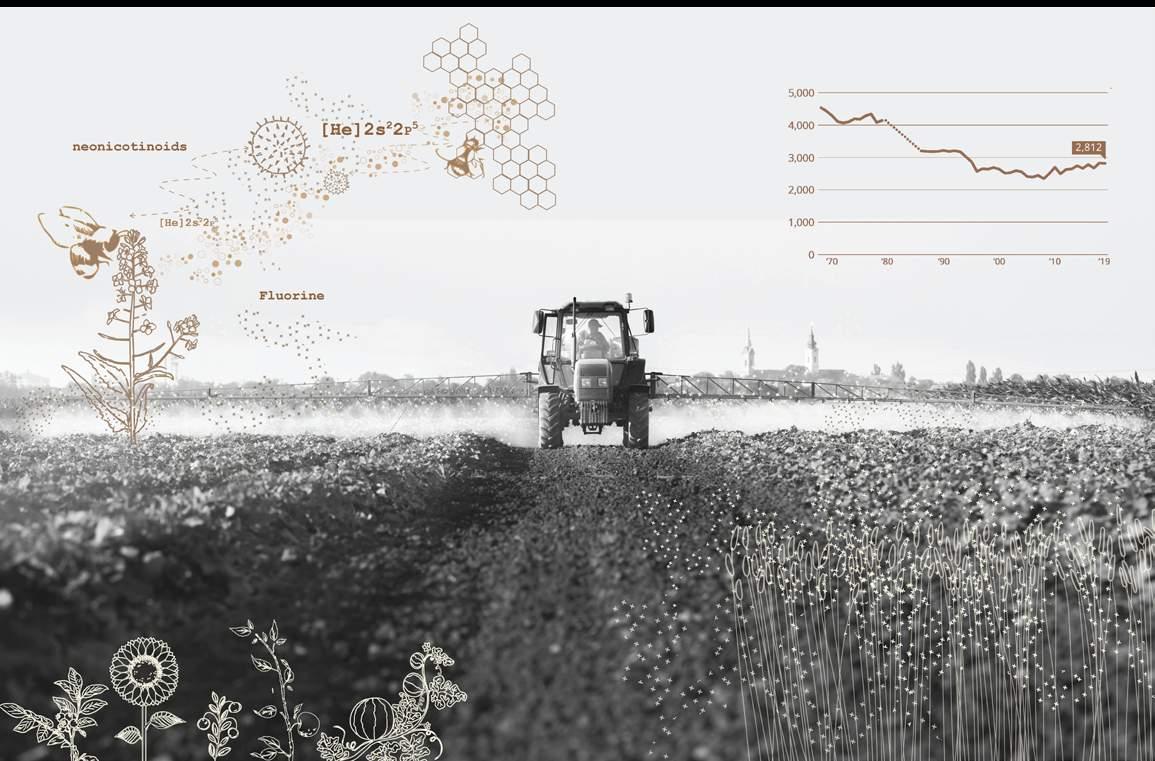
Research led by Doug McMahon, Stevenson Chair of Biological Sciences, sought to explore the connection between neonicotinoids and the death of the bees.2 In their study, the Vandy team found that when bees pollinate plants which have been covered in certain pesticides that contain non lethal levels of neonicotinoids, a chemical resembling nicotine, the bees are losing sleep, causing a disruption of their circadian rhythm.2 This, in turn, can cause the honey bees to lose their sense of time and navigation, which leads to broader stress within highly social bee populations and lower hive survival rates.
1.Dengler, Roni. “Neonicotinoid Pesticides Are Slowly Killing Bees.” PBS NewsHour, 29 June 2017
2.Tackenberg, Michael C., et al. “Neonicotinoids Disrupt Circadian Rhythms and Sleep in Honey Bees.” Scientific Reports, 2022
3.Wood, Thomas James, and Dave Goulson. “The Environmental Risks of Neonicotinoid Pesticides: A Review of the Evidence Post 2013.” Environmental Science and Pollution Research, 2017
Opportunites for Education 44 45
Bee Stations: Refueling Bees and Creating
The modern honeybee has been bred and managed to travel and pollinate much more than is natural for the species. “They’re dying of stress, which is stressing us out. But we’ve only got ourselves to blame.”1 says David Wallace-Well.The essential reason is that it is a case of on-the-job stress. The bees in question are worker bees, the tiniest employees of our agricultural-industrial complex. More than our doubles, bees are our slaves. Migrant workers, anyway. A pound of the most common kind of honey, represents the nectar from 8.7 million flowers, which gives some indication of just how hard they work for human survival.1
The process of the managed colony is not natural in the way we might like to think: bees happily flitting about the countryside from one plant to the next. Honeybees are not even native to North America. “They were brought here to work, then bred to work more; first to make honey, then, beginning about 50 years ago, to pollinate our crops.”1 Due to the pressure of commercial agriculture, the honeybees live almost exclusively in what are called managed colonies; hives people built for them so that it might be easier to transport them around the country to industrial farms that need them for pollination. This is the answer to the riddle of how honeybees have survived mass die-offs each year: “Their population has been kept steady by an industrial-farming infrastructure that requires their labor and can extract a few extra cents from consumers to support beekeepers’ rebreeding efforts.”1
1 Dengler, Roni. “Neonicotinoid Pesticides Are Slowly Killing Bees.” PBS NewsHour, 29 June 2017, www.pbs.org/newshour/science/ neonicotinoid-pesticides-slowly-killing-bees.

The slavery behind the death of the bees
46 47
Bee Stations: Refueling Bees and Creating Opportunites for
Education
Apidea Habitat Condition Issuie vs. Sulotion
Pesticide, Parasitic, and mono-crop food deserts are three significant issues that lead the colony declines. Bee colonies’ dynamics affected by exposure to the direct spray of the pesticides and soil application methods exhibited the minor recovery. Varroa mite is an external parasite spread from its original host, and this mite weakens honey bees by sucking hemolymph “blood” from its host and transmitting bee pathogens.
Parasitic mite syndrome TThe varroa mite is considered by many to be the most serious malady of honey bees. A second mite that infests honey bees is the honey bee tracheal mite.

 Pesticide exporesure | Pesticide is a significant issue that leads to the honey bees’ direct death.
Pesticide exporesure | Pesticide is a significant issue that leads to the honey bees’ direct death.
for Education 48 49
Bee Stations: Refueling Bees and Creating Opportunites
Monocrop Cropland
Monoculture agriculture is another issue that causes significant colony decline. Honey bee colonies are healthier and stronger with access to pollen from diverse sources of flowering plants. However, intensive agriculture such as single crops, few flowering weeds, limited hedgerows, and urbanization have reduced floral diversity in landscapes. To reach the production requirements, beekeepers usually use artificial sources like sugar syrup, corn syrup, or pollen substitutes to meet their colonies’ increased nutritional demands.1
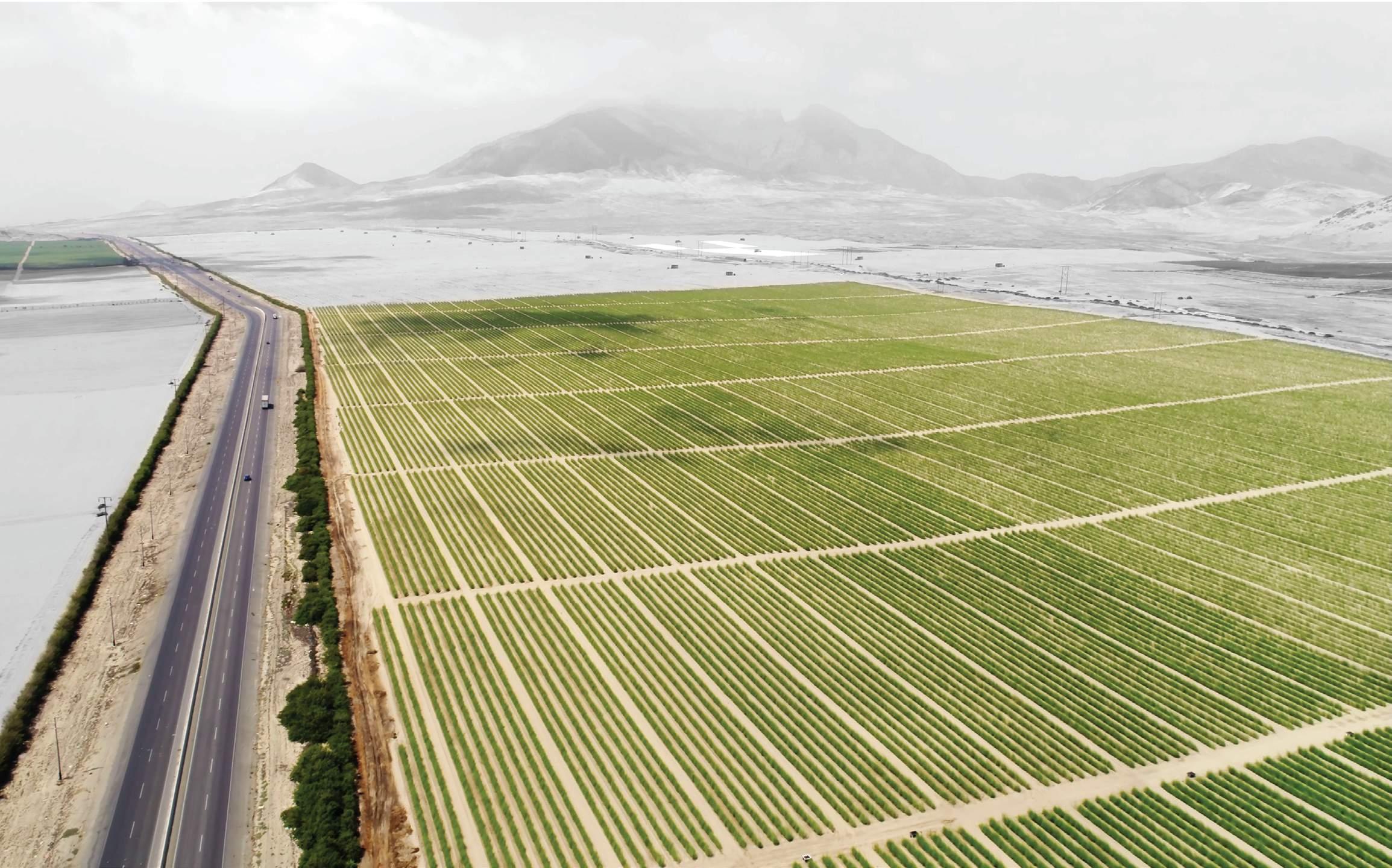 1.US EPA,OCSPP,OPP. “Colony Collapse Disorder US EPA.” US EPA, 26 Apr. 20181
1.US EPA,OCSPP,OPP. “Colony Collapse Disorder US EPA.” US EPA, 26 Apr. 20181
Figure 8 50 51
Bee Stations: Refueling Bees and Creating Opportunites for Education
CHAPTER 03 | CONDITIONS ANALYSIS
CUMMERICAL BEEKEEPING TYPOLOGY OF POLLINATED CASE STUDIES

for Education Figure 9 52 53
Bee Stations: Refueling Bees and Creating Opportunites
Intensive agricultural landscapes can be hostile for bees due to a lack of floral and nesting resources and due to management-related stress, especially the pesticide use and soil tillage that could cause 30 % - 50% colony declines each year.1
People observed that the area of cropland had more substantial effects on bees’ pollen deposition than the area of semi-natural habitats. Specifically, a 10% increase in the proportion of cropland reduced pollen delivery by 7%.2 Scientists have also discovered another way to kill bee populationsmodern-day farming techniques. Therefore, pollination deficits can increase malnutrition in humans.
1: US EPA,OCSPP,OPP. “Colony Collapse Disorder | US EPA.” US EPA, 26 Apr. 2018, www.epa.gov/pollinator-protection/colony-collapse-disorder.
2: Pfister, S.C., Eckerter, P.W., Krebs, J. et al. Dominance of cropland reduces the pollen deposition from bumble bees. Sci Rep 8, 13873 (2018).

Crop Land Analysis 55
Major Pollenated Crop Types Analysis
The central beekeeping crop states are California, North Dakota, Texas, and Massachusetts, with four significant pollinated crops: almonds, canola, watermelons, and cranberries. The analysis is based on the existing conditions of shapes and forms of the typical cropland and how beekeepers layout the beehives on the crop field.

Bee Stations: Refueling Bees and Creating Opportunites for Education 56 57
CALIFORNIA | Almond
The Almond industry is one of the major crops that plays an essential role in the international sector. Thus, almond fields in California require the largest gathering of bees all over the U.S. Each February, 60% of American bee colonies travel to almond plantations. This image shows the typical layout of the almond field in California, and each acre of the almond field requires 1-2 hives of beehives.


1-2 hives 1-2 beehives located in between the almond trees

for Education Figure 10 58 59
Bee Stations: Refueling Bees and Creating Opportunites
TEXAS | Watermellons
The watermelon industry is one of the major crops that plays a vital role in the international sector in Texas. This map shows the typical layout of the watermelon field in Texas, which shows the irrigation role between the mellons. Each acre of the watermelon fields requires 2-3 hives of the honeybee.


Figure 11 60 61
Bee Stations: Refueling Bees and Creating Opportunites for Education
NORTH DAKOTA | Canola

The Canola industry is one of the major crops that plays a vital role in the international sector in Texas. This map shows the typical layout of the Canola field in N.D., which shows the kettle ponds inside the canola field. Each acre of the Canola fields requires 2-3 hives of honeybee.

2-3 hives 2-3 beehives located in between the Canola filed

for Education Figure 12 62 63
Bee Stations: Refueling Bees and Creating Opportunites
MASSACHUSETTS | Cranberry
The cranberry industry is one of the major crops that plays a vital role in the international sector in Massatussas. This map shows the typical layout of the cranberries field in Massatusas, which shows the wetland inside the cranberries field. Each acre of the cranberries fields requires 1-2 hives of the honeybee.


1-2 hives 1-2 beehives located in between the Cranberry filed

for Education Figure 13 64 65
Bee Stations: Refueling Bees and Creating Opportunites
Holding Yard for Bee Transportation

To achieve the massive beekeeping migration. Beekeepers need to unload colonies into holding yards to let bees adapt to the local weather, food refuel, and rest. A standard semi-trailer usually holds 102 pallets, with each pallet holding four double-deep, ten-frame colonies. That’s 408 honey bee colonies per load. These yards can be pretty crowded, holding more than hundreds of colonies.2
Because of California’s relatively mild winter weather, limited forage, and high bee density, these bees will remain active, consuming more resources during this period than colonies kept in colder winter conditions. As a result, beekeepers may need to feed their bees sugars through the winter months.1 Better condition for these holding yards is needed to provide better quality forage plants.
1: US EPA,OCSPP,OPP. “Colony Collapse Disorder | US EPA.” US EPA, 26 Apr. 2018, www.epa.gov/pollinator-protection/colony-collapse-disorder.
2: Pfister, S.C., Eckerter, P.W., Krebs, J. et al. Dominance of cropland reduces the pollen deposition from bumble bees. Sci Rep 8, 13873 (2018).
Opportunites for Education Figure 14 66 67
Bee Stations: Refueling Bees and Creating
Xerces Bee BetterCertified Case Study
Central Valley is one of the world’s most important almond production areas with the most intensive farm industries that supply a chain of almond production from fresh fruits to the dairy industry.

Since 2017, the Xerces Society for Invertebrate Conservation has partnered with almond producers. To get their farms certified as a BBC(Bee Better Certified) farmland.1 There are now 4,000 acres of certified farmland installed in new habitats under the BBC guidelines.1
“The program will be a massive milestone for the program, allowing producers and consumers to support products and ingredients grown in ways that support bees, butterflies, and other beneficial insects. In the meantime, people should continue collaboration with other grain, fruit, and vegetable producers who are also working to certify their farms.”1
The Bee Better Certified programs could adapt as a part of the design strategy to create a powerful habitat corridor.
1. Eric, Lee-Mäder, et al. “Bee Better Certified Engages the Almond Industry.” Xerces Society, 22 Apr. 2019
Bee Stations: Refueling Bees and Creating Opportunites for Education Figure 15 68 69
CHAPTER 04 | DESIGN PROPOSAL
DESIGN STRATEGY
CORRIDORE HABITAT PROPOSAL BEE STATIONS PROPOSAL DETAIL DESIGN
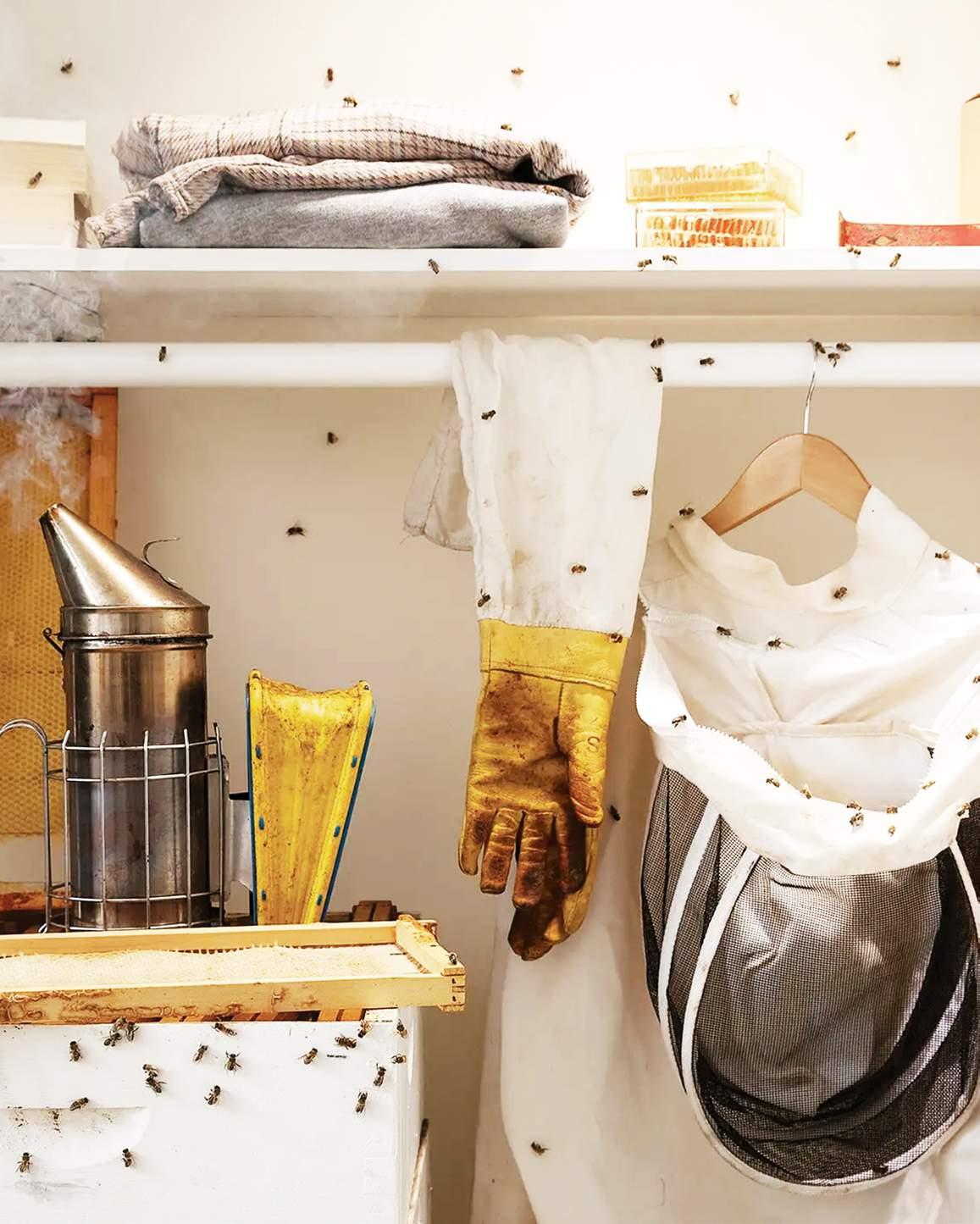
Bees and Creating Opportunites for Education Figure 16 70 71
Bee Stations: Refueling
Bee Station Network
To solve the problem of the bee colony decline. This thesis proposes a network of bee stations and corridors that could improve the health of transported bee populations, increase local beekeeping, and help educate the public about the importance of bees and pollinators.
75% of bees typically forage within 0.6 miles no more than 2 miles
Osmia spp. Mason Bees 300 feet
Bombus impatiens Common Eastern Bumble Bee 2-5miles
Stations:
and Creating Opportunites for Education 72 73
Bee
Refueling Bees
The hub stations include about 100 acres of diversified high-quality forage wildflower species where beekeeper’s trucks can stop to “refuel” their hives as a holding yard. The hub could also easily access by people pass by. The bee stations also have an education center where the public can walk through the wildflower fields, observe bees, make beehives, and learn how to keep bees.
Public access | day times or no blooming season























































































































Education center obsering and learning

Bee Transport resting refueling Regular visitors /people pass by Local residence 50mi - 100mi
Trucks “refuel” | high-quality forage wildflower
Hubs Strategy Bee
Creating Opportunites for Education 74 75
Stations: Refueling Bees and
Corriddors Strategy





Each habitat corridor made of annual and perennial plants depends on the different site and crop types located under the large crops, besides more minor crops, in between the crop field and major routes. This annual habitat zone shifts yearly and seasonally and is isolated from human access.
Besides major crop | windbreak zone






















Inbetween crop lands | adapte lands as a part of crop filed













Under Large Crop Under or inbetween large crop land







Windbreaks Wetlands Roating crops Under Large Crops At the side of Crops Crop land Break Land Bees Moving Distence Preserve for Bees Bumble Bees Honey Bees 5 - 10mi 5 - 10mi
Bee
for Education 76 77
Stations: Refueling Bees and Creating Opportunites
Bee Station Network Regional Analysis
Station Network proposes a future bee system that encourages localizing pollinator habitat and creates better-transporting conditions for bees.
This network includes bee refueling zones, and educational centers; it also including habitat corridors Bee Fly Distance








space Bee
Bee Station (Foraging zone + Education center) Corridor
025 50 N Bakersfield Sacramento Stockton Fresno ed salia Sacramento Stockton Modesto Fresno Stockton Modesto Fresno Merced Visalia Bee Stations: Refueling Bees and Creating Opportunites for Education 78 79
Preserve land + Green
Stations + Corridor
Habitat
Bee Station Planting Strategy
The planting strategies show the different types of California native plants that serve the corridors and stations through the season. It provides various colors and styles of forage plants that support bee habitats from summer to winter.
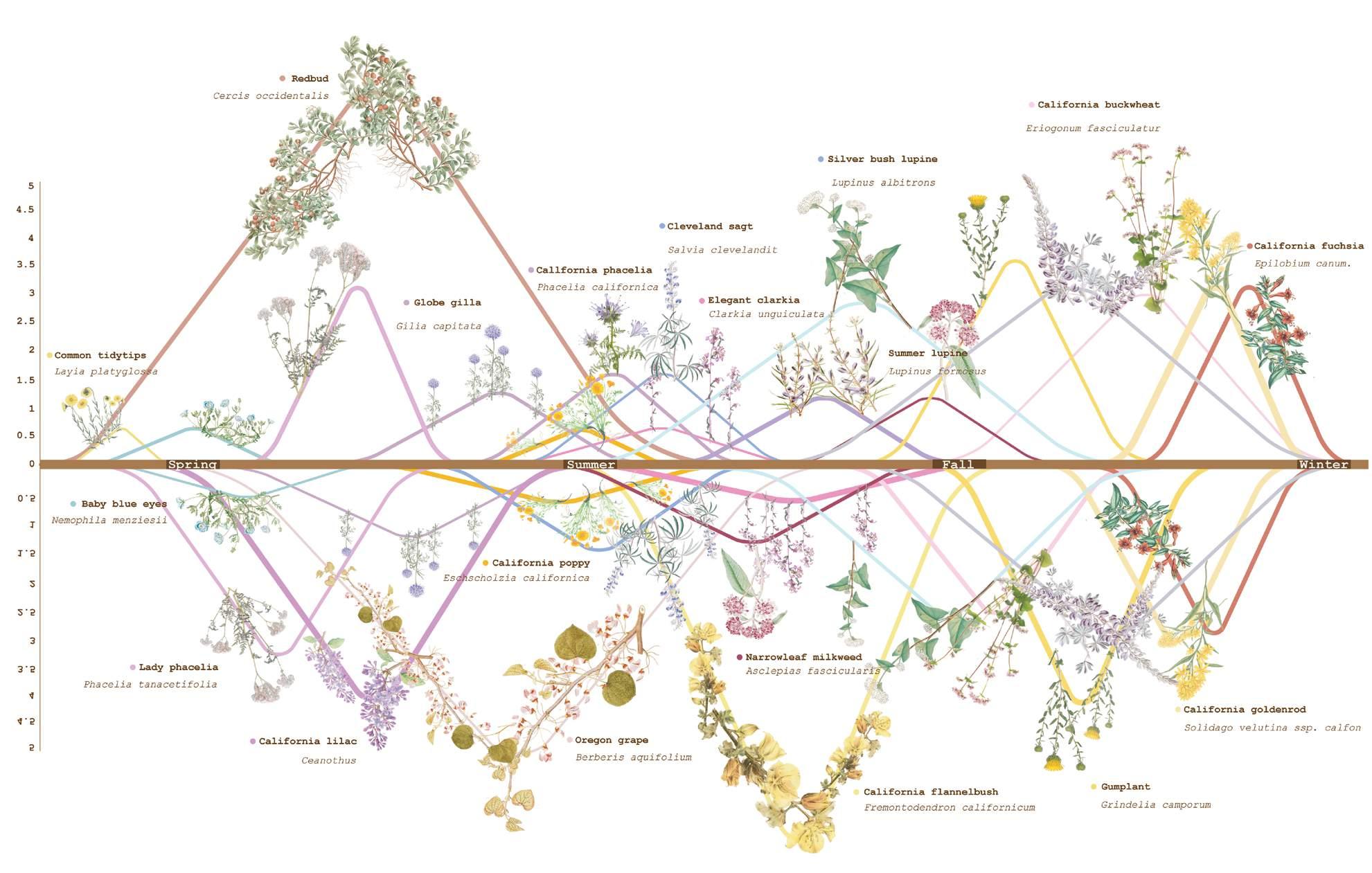
Corridor Habitat Bee Stations
Hight
Bee Stations: Refueling Bees and Creating Opportunites for Education 80 81
Bee Station Network Proposal
Station Network proposes a future bee system that encourages localizing pollinator habitat and creates better-transporting conditions for bees. This network includes bee refueling zones, habitat corridors and educational centers.

for Education 82 83
Bee Stations: Refueling Bees and Creating
Opportunites
Corridor Design Strategy
In order to solve the colony shortage. Through the design it aims to create a rotated pollinator habitat carpet which provides rotating habitat zoom that supports the local bee habitat and at the same time increase the beehive zone for the pollinating season.



Each of the habitat carpet made of annual and perennial plants depends on the different site and crop types, that located under, beside, in between the crop field and major routes. The annual habitat zoo also shifts yearly and seasonaly.

Under the large crop
On Side of the cropland
Rotate and adapt as a part of cropland

Bee
Creating Opportunites for Education 84 85
Stations: Refueling Bees and
Corridor Stratege I


















Under the large crop


It is planting perennial and annual forage native plants under the large tree crops, such as apples and almonds. On the one hand, this could provide a habitat for wild bees. On the other hand, it could increase the organic matter of the crop soil.
























86 87
Bee Stations: Refueling Bees and Creating Opportunites for Education
Corridor Strategy II
Beside of the cropland





It is planting perennial and annual forage native plants besides the crops feilds. In order to provide diversified forage zone for bees. Using Texas watermelon filed as a site analysis.
TX - Watermelon filed
Creating Opportunites for Education 88 89
Bee Stations: Refueling Bees and
Corridor Strategy III


Yearly Forage Flowering Zone

















Provide a year-round planting strategy for a local farm. This strategy aims to increase fertility and biodiversity of the farmland and corridor habitat.





Increasinghabitat+f


ertil i t y + pol l i n a t e r









Opportunites for Education 90 91
Bee Stations: Refueling Bees and Creating
Corridor Strategy IV Seasonal Rotating Crop Rotating Strategy





















To adding the corridor habitat as a part of the tipical crop seasonal ratatation plan.











Habitat Plant s




Local pullinator forage

Spring Summer Fall Winter


Fertility





























Organic matters
Bee Stations: Refueling Bees and Creating Opportunites for Education 92 93
Corridor Strategy V Adaptation Land Windbreaks

Use crops, windbreaks, and other adaptation places such as a river or cattle pounds to build permeated Habitat carpet.

Preserve Lands
Creating Opportunites for Education 94 95
Bee Stations: Refueling Bees and
Crop Planting Zone

















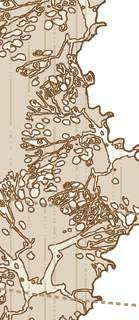





Wind Blowing
Wind Currents in Confusion



















Protect Zone ( about 30 M)














Best Place to create a habitat corridor that easily seedlings and has a safe shelter for local bees. It also creates space for local beekeeping.






Wind Soft



Local Bee Hive





30 M

Detail | Canola
Windbreak Habitat Corridor Create Dist erb i n g dluoc pleh gnildees Protect Zone Habitata Corridor
Bee Stations: Refueling Bees and Creating Opportunites for Education 96 97
Detail | Cranberry
Inbetween cropland habitat Corridor

Education 98 99
Bee Stations: Refueling Bees and Creating Opportunites for
Bee Station Proposal
The bee stations include diversified high-quality forage wildflower species where beekeeper’s trucks can “refuel” their hives as a holding yard. It also have an education center where the public can walk through the wildflower fields, observe bees, make beehives, and learn how to keep bees. This is a point that can bring people together to understand bees.

Bee Stations: Refueling Bees and Creating Opportunites for Education 100 101


Commercial Bee “refuel” Daily visiters
Opportunites for Education 102 103
Bee Stations: Refueling Bees and Creating
Perpective | Platform experience between forage and crops

104 105
Bee Stations: Refueling Bees and Creating Opportunites for
Education

Opportunites for Education 106 107
Education center Bee Stations: Refueling Bees and Creating
center
and beehive adopt place

Education 108 109
Education
| Beekeeping educate
Bee Stations: Refueling Bees and Creating Opportunites for
Education center | Inside education center with observe hives and window observe zone

110 111
Bee Stations: Refueling Bees and Creating Opportunites for
Education
Reflection
Landscape architects have discussed the wild creature refugees and reexamined the wildlife habitat more and more. By doing this thesis research on the commercial bees, I understand that how significantly the pollinators such as bees and other wild species played a role in the landscape and the whole ecosystem, which face issues such as increasing anthropogenic pressure, including over-cultivated land, modern agriculture systems, mono-crop deserts, and the overuse of pesticides. Future landscapers face severe problems of loss of natural habitats. As a young designer, my destination is to create a resilient landscape design that balances and increases biodiversity while educating others to protect nature.
To reactivate the critical role of nature power and reconnect the landscapes with wildlife habitats that could sustain the whole system. We must design with attention, humility, intention, direction, and confidence as landscape designers.1 To claim the wildness that makes us human, we must value it. Without the wildlife, people are convicted to the endless monochrome, lost to a monoculture of what we are making.1
Thus, we should always consider sufficient biodiversity connecting nature habitats in future landscape designs. Wildlife cannot function adequately to support terrestrial productivity and expansion. Therefore, a healthy, diversified, and resilient design concept should be essential in the future of landscape design.
1.Lister, Nina-Marie. “Of Wilderness, Wild-Ness, and Wild Things.” The Nature of Cities, 12 Feb. 2017
Bees and Creating Opportunites for Education 112 113
Bee Stations: Refueling
Acknowledgement

I am thankful to all my professors and classmates that have contributed a great deal to my experience at RISD. A special ‘Thanks’ to my advisor, Emily Vogler, who spend all the times with me through the journey as beggining.
To my secoundary Gavin Zeitz, and tertiary advisor, Hope Leeson.
Thank you to Johana Barthmaier and Ann for your excellent critics throughout the semester.
This thesis has a perfect ending because of your powerful suggestions, support, and encouragement.
Thank you to Ellen Garrett for your writing guidance.
I’ll never forget this incredible time and appreciate your kindness and knowledge.
Bee
Bees
Creating Opportunites for Education 114 115
Stations: Refueling
and
Bond, Jennifer K., et al. “Honey Bees on the Move: From Pollination to Honey Production andBack.”Www.ers.usda.gov,www.ers.usda.gov/ publications/pub-details/?pubid=101475
Breed, Michael D., and Janice Moore. Encyclopedia of Animal Behavior. Elsevier, 2010
David Wallace-Wells, “The Blight of the Honeybee.” (2015).https://nymag.com/intelligencer/2015/06/ bees-are-iterally-worrying-themselves-to-death.html
“The Big Picture: Using Wildflower Strips for Pest Control.” Rothamsted Research, www.rothamsted. ac.uk/articles/big-picture-using-wildflower-stripspest-control.
US EPA,OCSPP,OPP. “Colony Collapse Disorder | US EPA.” US EPA, 26 Apr. 2018, www.epa.govpollinatorprotection/colony-collapse-disorder.
Figure 1, Kendrick Brinson for The New York Times
Figure 2, Monocropping of Asparagus in a desert. South America, Peru. Aerial video footage
Figure 3, Andrew Newwy, Striking Photographs of the Ancient Tradition of Honey Hunting in Nepa, https://mymodernmet.com/andrew-newey-gurunghoney-hunters/
Figure 14, Google eart
Figure 15, Ilona Szwarc for The New York Times
Figure 16, Ilona Szwarc for The New York Times
Dengler, Roni. “Neonicotinoid Pesticides Are Slowly Killing Bees.” PBS NewsHour, 29 June 2017, www. pbs.org/newshour/science/neonicotinoid-pesticidesslowly-killing-bees.
Goulson, Dave. “The Beguiling History of Bees [Excerpt].” Scientific American, 25 Apr. 2014, www. scientificamerican.com/article/the-beguiling-historyof-bees-excerpt/.
Watson, Kelly, and J. Anthony Stallins. “Honey Bees and Colony Collapse Disorder: A Pluralistic Reframing.” Geography Compass, vol. 10, no. 5, May 2016, pp. 222–36, https://doi.org/10.1111/ gec3.12266.
Wood, Thomas James, and Dave Goulson. “The Environmental Risks of Neonicotinoid Pesticides: A Review of he Evidence Post 2013.” Environmental Science and Pollution Research, vol. 24, no. 21, 7 June 2017, pp. 17285–17325, 10.1007/s11356-0179240-x.
Lister, Nina-Marie. “Of Wilderness, Wild-Ness, and Wild Things.” The Nature of Cities, 12 Feb. 2017, www.thenatureofcities.com/2017/02/12/ofwilderness-wildness-and-wild-things/. Accessed 29 May 2022.
Pfister, S.C., Eckerter, P.W., Krebs, J. et al. Dominance of cropland reduces the pollen deposition from bumble bees. Sci Rep 8, 13873 (2018).
Tackenberg, Michael C., et al. “Neonicotinoids Disrupt Circadian Rhythms and Sleep in Honey Bees.” Scientific Reports, vol. 10, no. 1, 21 Oct. 2020, 10.1038/s41598-020-72041-3.
Wilson-Rich, Noah. The Bee : A Natural History. Ivy Press, 2018.
Figure 4, Xiaodong Sun, Food in the Field - When the Hive is Filled
Figure 5, Kendrick Brinson for The New York Times
Figure 6, Museum of the earth, Evolution and Fossil Record of Bees https://www.museumoftheearth.org/ bees/evolution-fossil-record
Figure 7, Peter Nelson, Turns Out, Migratory Beekeepers Are Essential Workers of the Pandemic, 2020
Figure 8, Beautiful vineyards landscape with wind turbines in the background, aerial view
Figure 9, Beautiful vineyards landscape with wind turbines in the background, aerial view
Figure 10, Peter Nelson, Movie: The Polinators
Figure 11, Google earth
Figure 12 Google earth
Figure 13 Google earth
Bibliography Image Citation Bee Stations: Refueling Bees and Creating Opportunites for Education 116 117

118
Bee Stations: Refueling Bees and Creating Opportunites for Education










 Honeybee Nest
Bumblebee Nest
Honeybee Nest
Bumblebee Nest





























































 Pesticide exporesure | Pesticide is a significant issue that leads to the honey bees’ direct death.
Pesticide exporesure | Pesticide is a significant issue that leads to the honey bees’ direct death.
 1.US EPA,OCSPP,OPP. “Colony Collapse Disorder US EPA.” US EPA, 26 Apr. 20181
1.US EPA,OCSPP,OPP. “Colony Collapse Disorder US EPA.” US EPA, 26 Apr. 20181














































































































































































